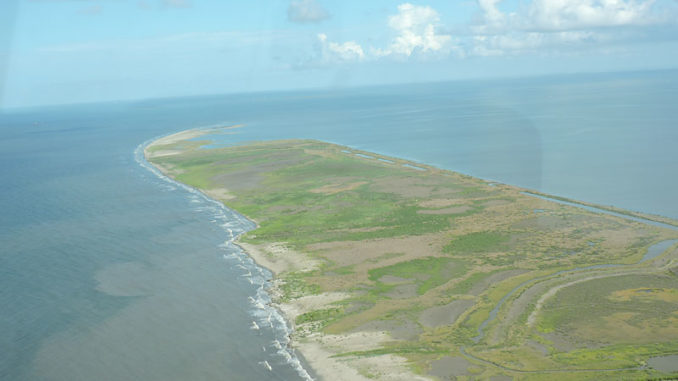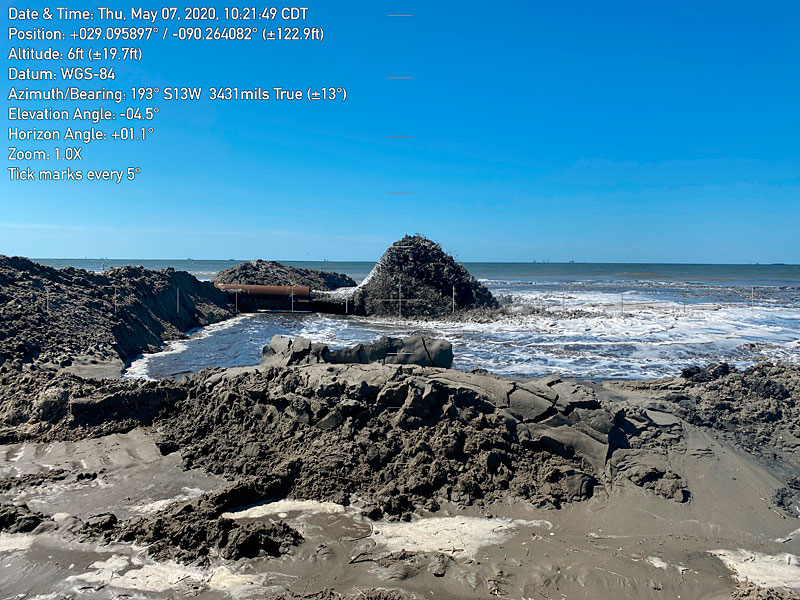
Barges, excavators, bulldozers and dredge pipe will be familiar sights to anglers chasing speckled trout from Fourchon west through Terrebonne Bay and Lake Pelto for the next couple years as the Louisiana Coastal Protection and Restoration Authority repairs and restores barrier islands and headlands using $167 million in Deepwater Horizon penalties.
Construction began on the first phase of the project at the West Belle Pass headland in February, and sand placement and construction of nearly 500 acres of beach, marsh and dunes will continue this summer. Beginning this month, more than 1,000 feet of beach and dunes will be built on Trinity East Island in Terrebonne Parish, while more than 400 acres of beach, dune and marsh will be built at Timbalier Island beginning in spring 2021. The National Marine Fisheries Service is working with the CPRA in all three phases.
The sand used to build the beaches and dunes will be mined from a large sediment deposit off Terrebonne Parish at Ship Shoal, an ancient headland of the Mississippi River. The materials will be dredged and placed on barges, then moved to the headlands and islands and pumped onshore. The same technique was employed during completed restoration projects at the Caminada headlands (commonly known as Elmer’s Island) in Lafourche and Jefferson Parish and at Whiskey Island in Terrebonne Parish.
In all, approximately 9.2 million cubic yards will be dredged at Ship Shoal through an agreement with the federal Bureau of Ocean Energy Management. The funding has been provided by the National Fish and Wildlife Foundation’s Guld Environmental Benefit Fund. Composed of $2.4 billion in fines from the Deepwater Horizon Disaster, the GEBF provides grants to repair and restore fish and wildlife habitat across the Gulf, with $1.2 billion earmarked for barrier island restoration and sediment diversions in Louisiana.

“We are working on three different areas during this project, because over the last decade, we’ve taken a more system-wide approach to restoring barrier islands and beaches,” said Bren Haase, CPRA’s executive director. “In our analysis of the Terrebonne Basin, we saw that there were weaknesses in certain areas of these islands and headlands that we could address that would prevent breaches and help provide more protection to the habitats inside the barrier islands.”
The West Belle Pass project builds upon a previous, smaller-scale beach and dune project that was completed in 2012 by the Coastal Wetlands Planning Protection and Restoration Act Task Force (CWPPRA), a federal-state effort that has built more than 100 small-scale coastal restoration projects since 1990.
“The CWPPRA project laid a good foundation for the headland, but the area has eroded some and the sand has shifted to the west over the last eight years,” said April Newman, CPRA’s project manager. “This current project will build some additional dunes as well as some marsh behind the dunes to help capture sand as the headland shifts and migrates.”
Trinity-East is one of three islands remaining from a massive, 25-mile-long island called Isle Dernier or Last Island. Hurricanes and subsidence have battered the remnant headland over the last century or more, splitting it into Trinity-East, Whiskey Island and Raccoon Island. The current project will repair a breach in Trinity Island that was opened by storm damage in 2017.
“In the early 80s, the Last Island area was losing land at a tremendous rate, and the prediction then was that all of those islands would be gone by 2015,” Haase said. “There have been a host of restoration efforts made throughout that area that have kept those islands largely intact and the land area has stayed roughly constant over the last 30 years. This is another effort to make sure there is still barrier islands in Terrebonne Parish for decades to come.”
Chris Macaluso is the Center for Marine Fisheries Director, Theodore Roosevelt Conservation Partnership
